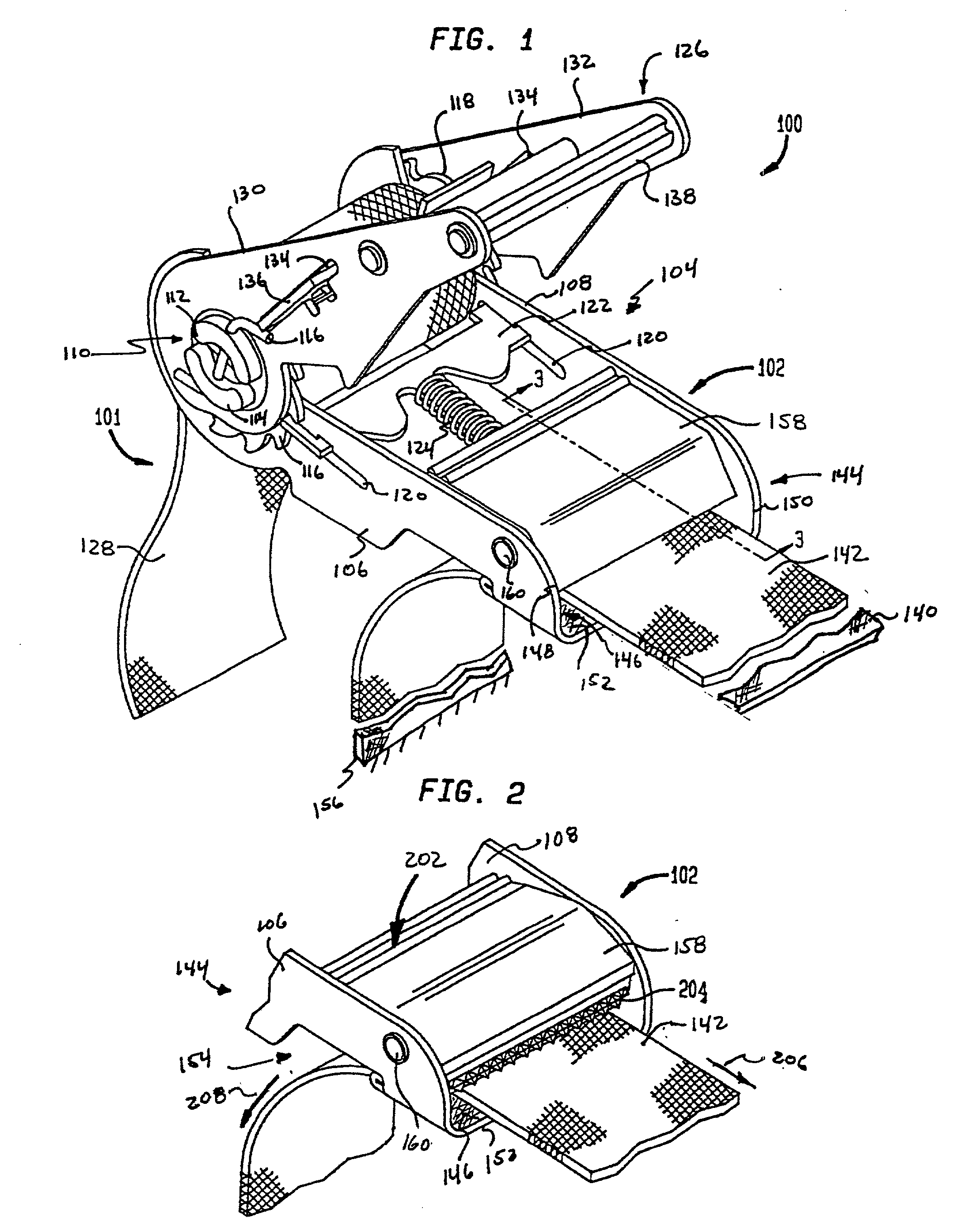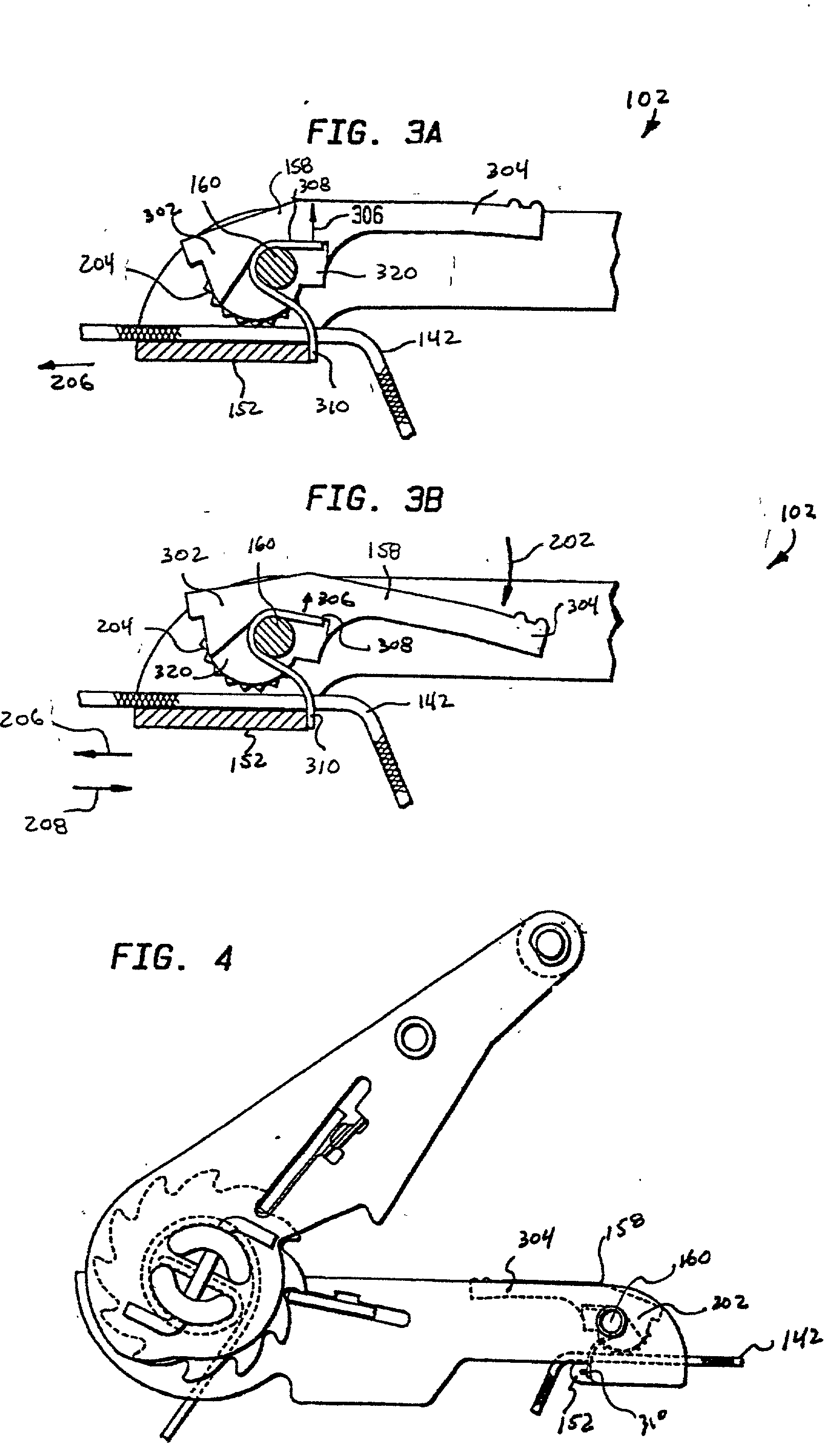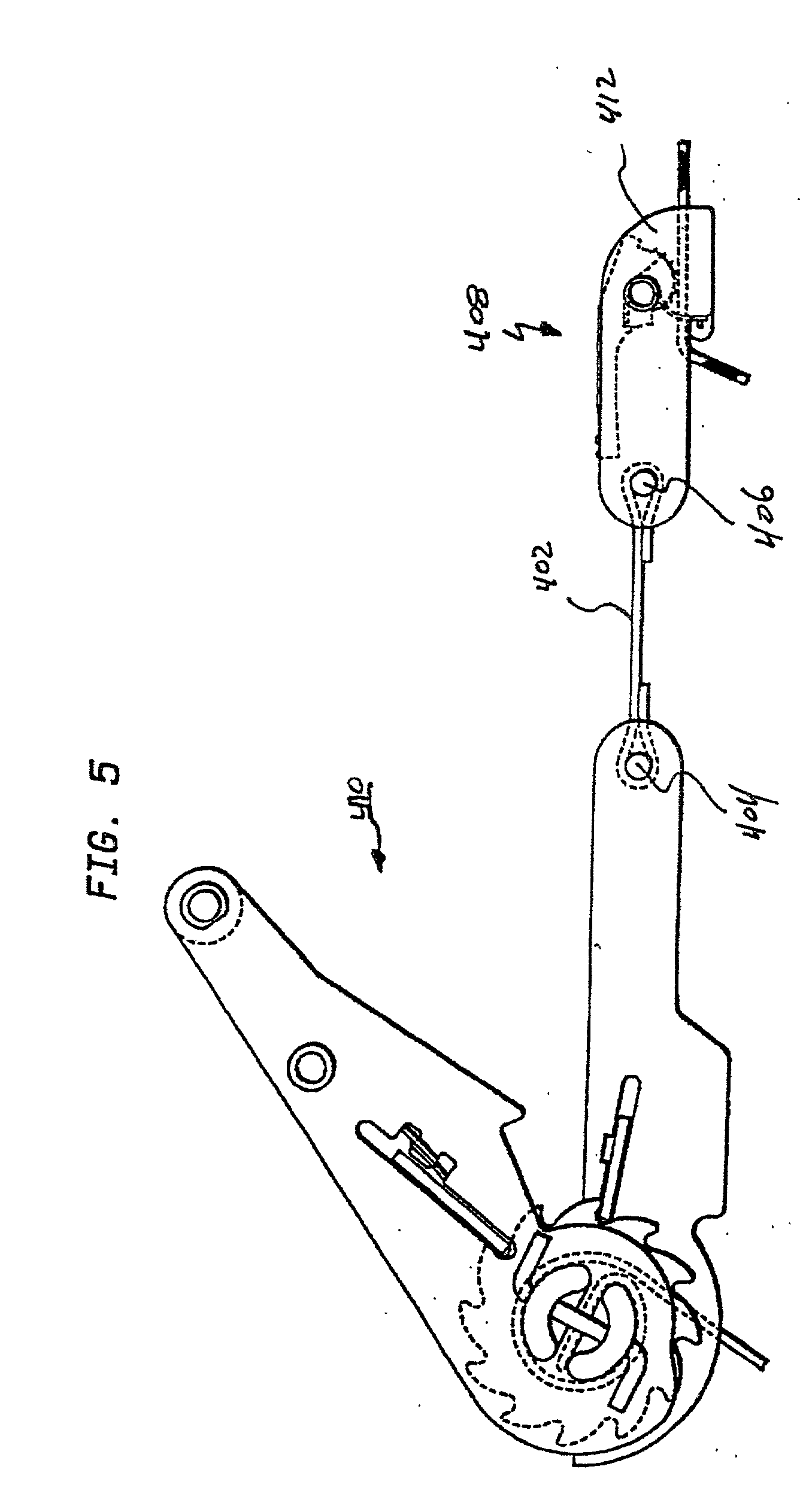Ratchet and cam buckle tensioning assembly and method for using same
a technology of ratchet buckle and cam buckle, which is applied in the direction of wire tools, transportation items, manufacturing tools, etc., can solve the problems of limited length of lashing strap, large number of tensioning operations to be performed, and oftentimes significant time required to perform numerous manipulations of ratchet buckles. achieve the effect of quick and convenient pre-tension
- Summary
- Abstract
- Description
- Claims
- Application Information
AI Technical Summary
Benefits of technology
Problems solved by technology
Method used
Image
Examples
Embodiment Construction
[0030] One aspect of the present invention is a ratchet and cam buckle tensioning assembly, interposed between a lashing strap tensioned by the ratchet buckle and a lead strap tensioned by the cam buckle, that enables an operator to quickly and conveniently pre-tension the lashing and lead straps by removing an un-tensioned length of the lead strap without having to operate the ratchet buckle. This enables the operator to utilize the ratchet buckle to tension the straps only when the requisite tensioning force cannot be provided by an unaided operator. This saves an operator from having to operate the ratchet buckle multiple times to uptake slack in the lashing strap when the leveraged tensioning force provided by such a ratchet buckle is unnecessary for such operations.
[0031] In the following description, the tensioning assembly is used in conjunction with flexible straps or belts. In particular, the disclosed embodiment of the tensioning apparatus can be harmoniously incorporated ...
PUM
| Property | Measurement | Unit |
|---|---|---|
| tensions | aaaaa | aaaaa |
| torque | aaaaa | aaaaa |
| movement | aaaaa | aaaaa |
Abstract
Description
Claims
Application Information
 Login to View More
Login to View More - R&D
- Intellectual Property
- Life Sciences
- Materials
- Tech Scout
- Unparalleled Data Quality
- Higher Quality Content
- 60% Fewer Hallucinations
Browse by: Latest US Patents, China's latest patents, Technical Efficacy Thesaurus, Application Domain, Technology Topic, Popular Technical Reports.
© 2025 PatSnap. All rights reserved.Legal|Privacy policy|Modern Slavery Act Transparency Statement|Sitemap|About US| Contact US: help@patsnap.com



